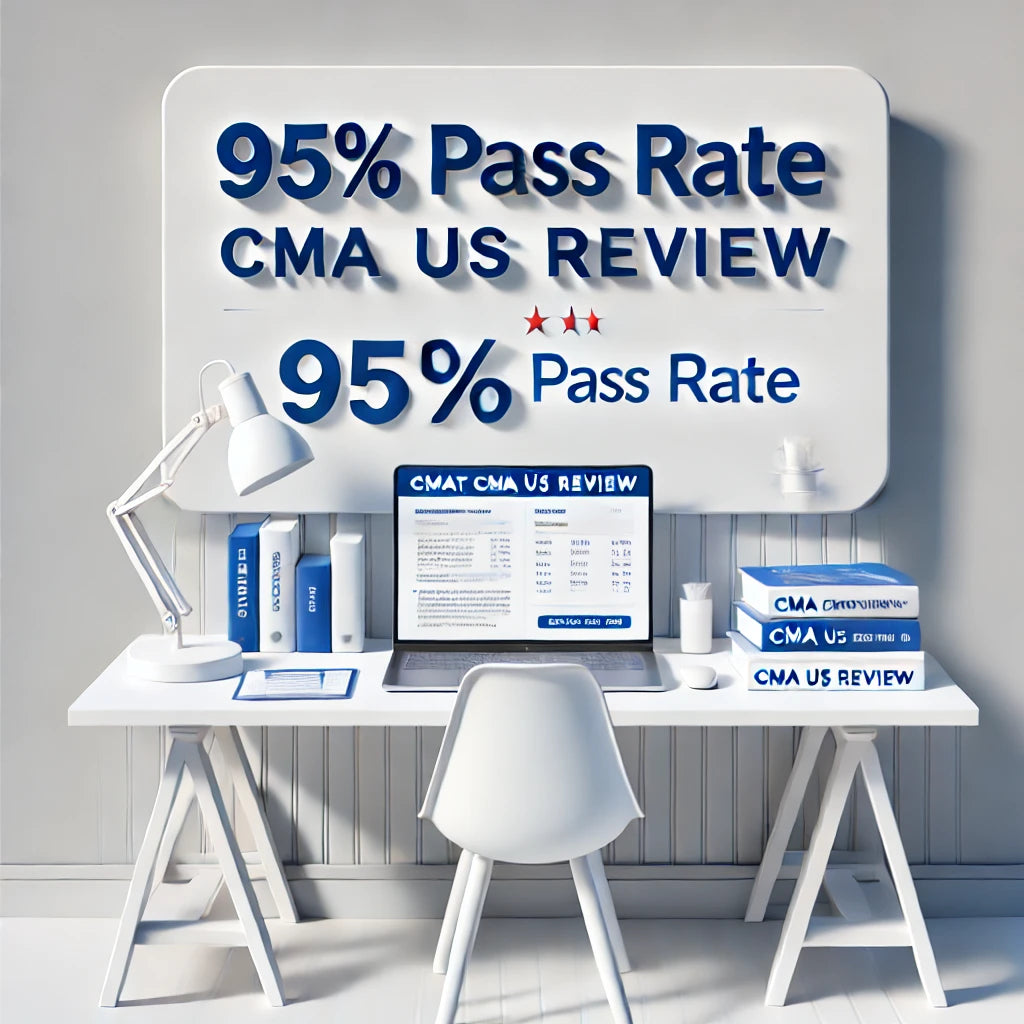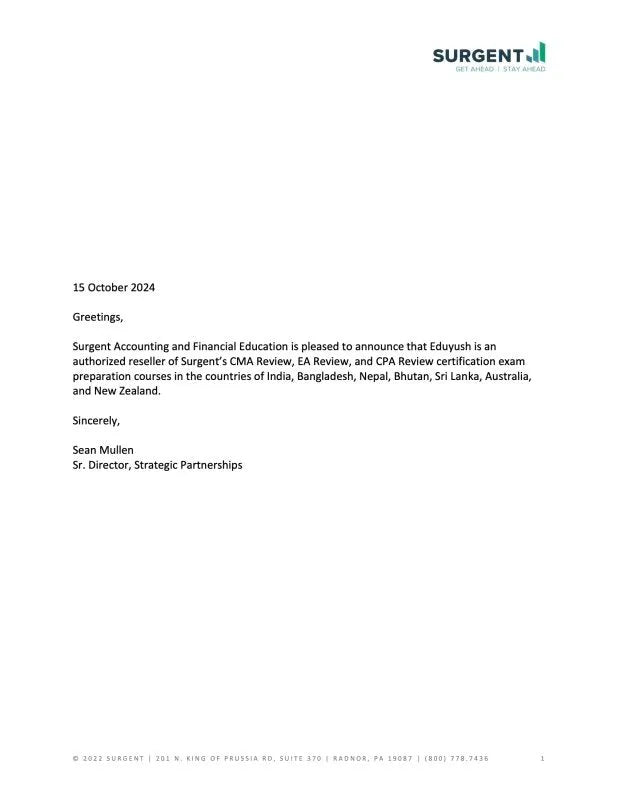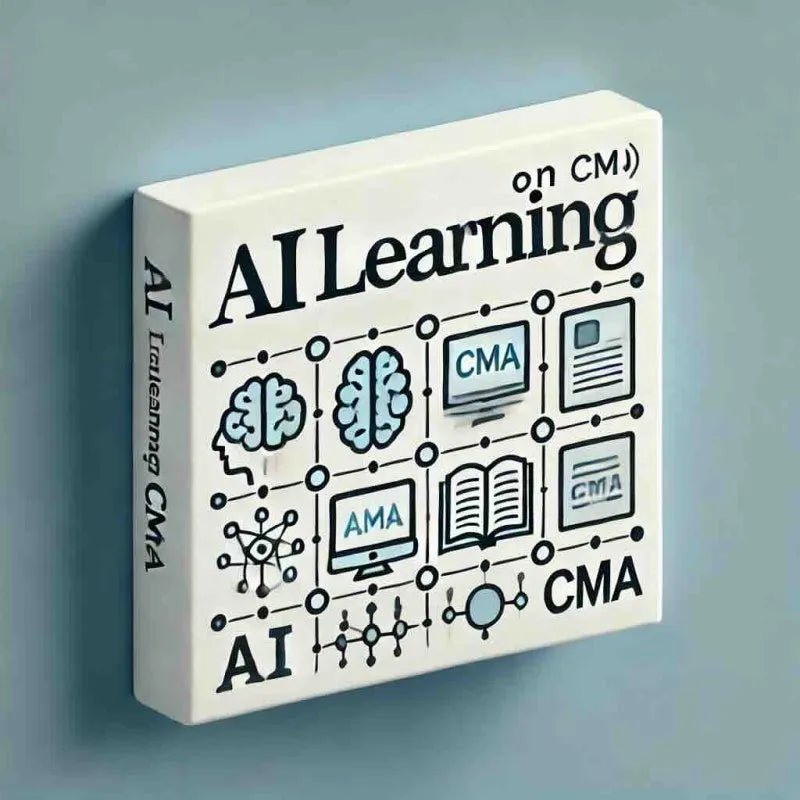CMA Exam High Yield Topics: Where to focus
CMA Exam High Yield Topics: How to Focus Your Study for Success
CMA exam high-yield topics are the key areas that carry the most weight in your exam, making them critical to your preparation. Focusing on these high-yield topics allows you to streamline your study plan and maximize your chances of passing both Part 1 and Part 2 of the CMA certification exam.
In this guide, we will break down these critical topics, explain their significance, and help you structure a study plan that targets the areas most likely to appear on the exam.
For tips on organizing your overall preparation, check out our comprehensive guide on the CMA Study Plan for 2025.
Why High Yield Topics Matter for CMA Exam Success
The CMA exam covers many topics, but not all are weighted equally. Focusing your study time on the high-yield topics—the areas most frequently tested and contribute the most to your score—is essential to passing on the first try. By prioritizing these areas, you ensure that you’re tackling the sections that will significantly impact your results.
For strategies to manage your time efficiently and maximize your study efforts, visit our detailed guide on CMA Exam Tips.
High Yield Topics for CMA Exam Part 1
Planning, Budgeting, and Forecasting (20%)
This section is one of the heaviest-weighted areas in Part 1. Expect questions related to variance analysis, budgeting methods, and forecasting models. Understanding how to apply these concepts in numerical calculations and real-world scenarios is critical.
- Tip: Use practice questions to refine your understanding and application of these concepts. For more detailed advice on tackling challenging topics, check out our article on How to Tackle CMA MCQ Questions.
Performance Management (20%)
This topic, which is equally weighted to Planning, Budgeting, and Forecasting, focuses on key performance indicators (KPIs), balanced scorecards, and variance analysis. You'll need a solid grasp of how performance metrics affect business decisions and financial outcomes.
Cost Management (15%)
This section will test your understanding of costing methods such as activity-based costing (ABC), process costing, and job-order costing. You'll need to apply these concepts to practical scenarios, making reviewing various costing strategies and their implications important.
Technology and Analytics (15%)
As technology plays an increasingly important role in Finance, this section evaluates your knowledge of data analytics and business intelligence tools. You'll be expected to understand how technology can enhance decision-making and improve organizational performance.
Visit our blog on CMA Exam Format for a complete breakdown of the exam's structure, including format and sections.
High Yield Topics for CMA Exam Part 2
Corporate Finance (25%)
Corporate Finance is the heaviest-weighted topic in Part 2, making it one of the most critical areas to focus on. It would help to master capital budgeting, risk management, and working capital management. These areas are frequently tested through complex financial problems that assess your decision-making abilities.
- Tip: Practice calculations for net present value (NPV), internal rate of return (IRR), and other financial metrics. For more information on scoring the exam, see our detailed article on how the CMA Exam is scored.
Financial Statement Analysis (20%)
This section requires a deep understanding of how to interpret financial statements to assess a company's performance. Key topics include ratio analysis, trend analysis, and comparative financial analysis. It is knowing how to evaluate profitability, liquidity, and solvency through these ratios.
- Tip: Spend time practicing how to calculate and interpret key financial ratios quickly, as they are frequently tested in both the MCQs and essay sections.
Decision Analysis (20%)
You’ll apply cost-volume-profit (CVP) analysis, marginal analysis, and incremental decision-making in decision analysis. This section tests your ability to make sound financial decisions by evaluating costs and benefits in various business scenarios.
- Tip: Pay close attention to CVP analysis and decision-making under uncertainty, as critical concepts soften when they appear in MCQ and essay questions.
How to Prioritize High-Yield Topics in Your Study Plan
Allocate Study Time Based on Weighting
It’s essential to prioritize the topics that carry the most weight. For Part 1, focus heavily on Planning, Budgeting, and Forecasting and Performance Management. In Part 2, dedicate significant time to Corporate Finance and Financial Statement Analysis. Structuring your study plan this way ensures you spend the most time on the sections that will impact your score the most.
For detailed guidance on creating an efficient study schedule, visit our blog on CMA Study Plan.
Incorporate Active Learning
Active learning strategies such as using flashcards, the teach-back method, and completing practice exams are critical to retaining complex concepts. Integrate these methods into your daily study sessions, especially for high-yield topics.
For more information on structuring your preparation efficiently, check out our resource on CMA Exam Dates, which will help you align your study schedule with exam timelines.
Why Practice Exams Are Key to Mastering High Yield Topics
Focus on Real-World Application
Practicing exams is one of the best ways to ensure you master high-yield topics. Practice tests help you apply theoretical knowledge and familiarize you with the exam’s structure and time constraints. Aim to complete at least 2,000-3,000 practice questions per part, focusing primarily on high-yield areas.
- Tip: Simulate actual exam conditions by timing yourself and answering questions without distractions. This will help you develop time management skills, which are critical during the actual exam.
Frequently Asked Questions About CMA Exam High Yield Topics
Which high-yield topics should I focus on for Part 1?
In Part 1, prioritize Planning, Budgeting, Forecasting, and Performance Management, as they both have a 20% weight.
What are the critical high-yield topics in Part 2?
For Part 2, focus primarily on Corporate Finance (25%) and Financial Statement Analysis (20%).
How can I maximize my score by focusing on high-yield topics?
Dedicating most of your study time—approximately 15-20 hours per week—to high-yield topics will give you the best chance of passing. These topics are tested most frequently and carry the highest weights in the exam.
How many practice questions should I complete?
Aim to complete at least 2,000-3,000 practice questions per part, focusing on high-yield topics to ensure you're comfortable with the most heavily tested material.
Why is corporate Finance a crucial topic in Part 2?
Corporate Finance carries a 25% weight, the most significant section of Part 2. It covers critical financial decision-making concepts that are vital to your overall score.
Conclusion: Master CMA Exam High Yield Topics for Success
Focusing on high-yield topics in the CMA exam is the most innovative way to ensure effective and efficient preparation. By concentrating on sections like Corporate Finance, Planning, Budgeting, Forecasting, and Performance Management, you can cover the material that will most significantly impact your score.
Regular practice exams, active learning techniques, and a well-structured study plan will further enhance your readiness for the exam.
Surgent CMA Review course
Pass the CMA USA Exam with a 95% Success Rate
✅Smart, AI-Driven Study Plan for Faster Learning
✅Comprehensive Study Materials & Expert Support
✅Now Available at India pricing at 70% Off
Frequently Asked Questions About the CMA US Certification Course
What is the CMA course, and how does it differ from other accounting certifications?
The CMA US course is a globally recognized certification program for finance and accounting professionals, focusing on strategic financial management, budgeting, and performance management. It’s ideal for those looking to advance in corporate finance roles.
How difficult is the CMA exam, and what are the pass rates?
The CMA exam is known for being challenging, with an average global pass rate of around 45%. The exam consists of two parts: Part 1 focuses on Financial Planning, Performance, and Analytics, while Part 2 covers Strategic Financial Management. Each part has a mix of multiple-choice questions and essay questions, which test both theoretical knowledge and practical application. Most candidates find Part 1 more quantitative and Part 2 more strategic, with both requiring thorough preparation.
How long does it take to complete the CMA US course?
Most candidates complete the course in 6-18 months, depending on study time and preparation. The two exam parts can be scheduled separately, allowing for flexible pacing.
How long do you have to pass both parts?
CMA aspirants have three years to successfully complete both components of the exam from the day they join their program. With ample time available, success is well within reach!
How much time should I dedicate to studying for the CMA exam?
Most candidates report studying between 150 to 200 hours for each part of the CMA exam. If working full-time, this could translate to around 3-5 months per part, depending on your existing accounting knowledge and study habits. A structured study schedule, covering each section systematically and including ample time for practice questions and revision, is essential for success.
CMA resources links
Here are all the links to CMA Resources
- ACCA vs CMA
- CMA Certification
- CMA Exam Centre. Locations
- CMA US online course
- CMA Exam Dates: Complete Guide for your Test in 2025
- CMA Exam Essay Questions: How to Master Them
- CMA Exam fees. Updated for 2024
- CMA Exam High Yield Topics: Where to focus
- CMA Exam Pass Rates: Insights and Tips
- CMA Exam Passing Score: How to Pass with ease
- CMA Exam pattern: Your Complete Guide
- CMA Exam Tips: How to Pass on Your First Try in 2025
- CMA Part 1 Formula Sheet
- CMA Part 1 or Part 2: Which to Take First?
- CMA Performance report: How to Interpret Exam Scores
- CMA Study Plan: How to Master the Exam in 2025
- CMA Syllabus Changes 2025: Key Updates
- CMA US CPE requirements: Complete Guide
- CMA US Eligibility Requirements
- CMA USA Course details: Comprehensive guide
- CMA USA Results: What to Expect in 2025
- CMA vs CA: Which is Better for Your Career?
- CMA vs CPA: Choosing the Right Path for Your Career
- CMA Work Experience Requirement
What are the career prospects for CMA holders, and how does it impact salary?
The CMA credential can open doors to various managerial and executive positions in finance, accounting, and corporate management. Common roles include financial analyst, management accountant, CFO, and financial controller. Salary expectations vary by region, but CMAs generally earn around 30-50% more than their non-certified peers. In the U.S., the average salary for CMAs can range from $80,000 to $150,000 annually, depending on experience and location.
Can I pursue the CMA certification while working full-time?
Yes, many candidates complete the CMA while working full-time. Time management is crucial, and it may involve studying during evenings and weekends. Employers often support CMA candidates by providing study resources, financial assistance, or time off for exam preparation. Reddit users recommend setting realistic goals and maintaining a consistent study routine to balance work and study effectively.
How is the CMA viewed outside the United States?
The CMA is recognized in over 100 countries and is highly regarded in various industries, particularly in regions like the Middle East, China, and India. It is especially valuable for professionals interested in multinational corporations or companies with a global presence. In some countries, CMA-certified professionals may earn equivalent or even higher salaries than CPAs or local accounting professionals.
Is the CMA course worth it if I already have a CPA or another accounting certification?
Many professionals with a CPA or another accounting certification pursue the CMA to gain expertise in management accounting and strategic decision-making. The two credentials can complement each other well, with the CPA focusing more on auditing and tax and the CMA emphasizing corporate finance and strategy. The choice depends on career goals—if you're aiming for managerial roles in corporate finance, the CMA is highly advantageous.
How is the job market for CMAs affected by automation and AI?
While automation and AI have affected traditional accounting roles, they have increased the demand for management accountants who can interpret data and contribute to strategic decision-making. CMAs are well-positioned to leverage these technologies, as their training covers data analytics and performance management, making them valuable assets in organizations seeking to innovate and optimize processes.
What happens if I fail a part of the CMA exam?
If you fail a part of the CMA exam, you can retake it during the next testing window. The IMA offers the exam in three testing windows each year: January-February, May-June, and September-October. Preparing for a retake may involve identifying areas of weakness, revising study materials, and perhaps trying different resources or study methods.
Who is eligible for the CMA US course?
To be eligible, candidates must have a bachelor’s degree from an accredited institution, two years of relevant professional experience in financial or management accounting, and IMA membership.













Leave a comment